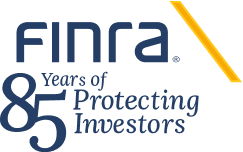Sources of Retirement Income
Managing retirement income starts with knowing what your sources of income will be—from Social Security to an employer-sponsored retirement savings account like a 401(k)—and the rules that govern each income source.
Social Security
For many, Social Security will be a vital—and significant—source of retirement income. Unlike most sources of retirement income, Social Security benefits are adjusted periodically for inflation.
Perhaps the biggest decision you'll make about Social Security is when to apply for your benefits. You can take reduced benefits at 62, wait until you're eligible to receive your full benefits—which will depend on the year in which you were born—or postpone your first payment to qualify for a larger amount. Many financial professionals suggest waiting at least until you are eligible for full benefits, or even longer, if you are able to do so.
The SSA offers many tools and resources to help you understand your Social Security benefits and how best to plan for the day when you will tap those benefits to help fund your retirement. Here are a few to explore:
- Find Your Full Retirement Age
- Social Security Retirement Planner
- When to Start Receiving Retirement Benefits
- Create Your Personal Social Security Account
- Life Expectancy Calculator
If you and your spouse are both eligible for Social Security benefits based on your work histories, you’ll face a key choice. You must decide together whether to draw on your individual accounts or have one of you draw what are called spousal benefits.
If you and your spouse earned approximately equal amounts over your working lives, drawing on your individual accounts will provide the greatest benefits. But if one of you earned substantially more than the other, you’ll want to compare your alternatives. If you are eligible for both your own retirement benefit and for benefits as a spouse, SSA will always pay you benefits based on your record first. If your benefit as a spouse is higher than your retirement benefit, you will receive a combination of benefits equaling the higher spouse's benefits.
If you have a minor child, you may be eligible for additional Social Security benefits.
COLAs Help You Manage Inflation
There are increases in Social Security benefits known as cost-of-living adjustments, or COLAs. They are designed to help offset the effects of inflation. Before 1975, beneficiaries had to await a special act of Congress to receive a benefit increase. Beginning in 1975, the SSA started automatic annual cost-of-living allowances.
Defined Benefit Plans
If you have a defined benefit pension, you should know before you retire about how much pension income you'll receive. This income is typically based on how long you worked at your company, what you earned and your age when you stopped working. As you approach retirement, you should check with your employer's human resources office on a number of pension eligibility questions. And after you retire, the office should still be a valuable resource.
First, you should verify that you are fully vested—that is, eligible to collect a full pension. Many private company employees become vested after five years of service, or gradually between years three and seven.
You should also ask your employer what happens to your pension plan benefits if you retire sooner than 65 or work past that age. Some companies might decrease the amount of pension you would otherwise receive if you stop working earlier or later than 65.
If you're married and are part of a defined benefit plan, your employer is legally bound to pay some of your pension amount to your surviving spouse when you die. The amount may be set at 50 percent, but you may be able to increase it. If you don't want your spouse to get any of your pension, your spouse must sign a written consent waiving rights to this income.
Pensions can be a major attraction to people working in the public sector and armed services. Government pensions and military retired pay tend to differ from corporate pensions in several ways:
- Government employees may be required to contribute a percentage of their after-tax earnings to their pensions.
- Government employees and military service members may be able to receive their pensions after a set time—such as 20 or 30 years—no matter how old they are or how close they are to the more traditional retirement age of 65.
- Government pensions and military retired pay tend to be adjusted automatically for inflation using a cost of living index adjustment, or COLA.
If you have questions are problems with your pension, a good place to start is the Department of Labor's Employee Benefits Security Administration (EBSA), which regulates retirement plans. You may contact EBSA toll-free: 866-444-EBSA (3272).
Many company pensions are insured by the Pension Benefit Guaranty Corporation (PBGC). This federally run organization was set up to protect defined benefit pensions—including those that end because an employer terminates a plan. If you lose track of your pension or your employer mismanages your plan, you can ask for help from the PBGC. You also can search for a pension you think you might have a right to on the PBGC's website. All you need is your name and the name of your former employer.
Defined Contribution Plans
If you have a defined contribution plan your employer may put money into the plan, allow you to contribute or sometimes contribute if you do. But, unlike a defined benefit pension, your employer doesn't make any promises about the income you'll receive when you stop working. Instead, that amount depends on how much money was invested, where it was invested and how long you've been in the plan.
Employer-sponsored retirement plans—such as 401(k)s, 403(b)s and 457s—are the best-known defined contribution plans. Other plans that generally cater to small businesses are SIMPLE IRAs and SIMPLE 401(k)s and Simplified Employee Pension (SEP) IRAs. These plans allow you to defer part of your current income into a retirement plan. In most cases, you also decide how your money is invested by choosing among options offered through the plan.
Defined contribution plans differ from defined benefit plans in several respects. For one thing, most defined contribution plans offer quicker, or even instant, vesting rights on any contributions your employer has made—and you are always automatically 100 percent vested in your own contributions and any earnings on those contributions.
One other very important feature of defined contribution plans is that when you switch jobs, you can usually move or roll over your accumulated assets to your new employer's plan or to an IRA. This way, you're starting with a balance to build on when you start a new job. If you can't move it, you can often leave your account with your former employer so it keeps growing until you retire.
Don't Squander Your "Rollover Moment"
Too many older Americans spend an entire life accumulating retirement savings, only to make choices that harm their financial situation after they retire. When deciding whether to stay where you are, roll over to an IRA, or move to a new employer's plan (if you chose to work in "retirement"), these tips can help you avoid mistakes that can torpedo your retirement savings:
- Take time to comparison shop. In most cases, you do not need to make a snap decision with respect to your current employer’s retirement savings plan.
- Compare fees and investment choices. Fees in particular are a key consideration. Small differences in cost can translate into big differences in the overall performance of your investments. The Department of Labor’s A Look at 401(k) Fees provides answers to many common questions about fees and expenses. If you are considering an IRA, ask your broker how much it will cost to open the account and what ongoing costs are associated with your potential investments.
- Be wary of rollover sales pitches that make broad claims that brokerage accounts or IRAs are "free" or have "no fee." Certain types of fees might not be charged, but others might—such as fees for opening, maintaining or closing accounts or costs associated with particular investment products. For more information, see 401(k) Rollovers.
Home Equity
Your home is also a potential source of retirement income. If you own your residence outright, or have built up significant home equity, two of the most common ways to use your home to provide retirement income are to sell it or obtain a reverse mortgage.
If you decide to sell your home, the objective is to use some portion of the proceeds of the sale to fund your retirement. This assumes of course that the value of your house has gone up since you bought it. The Taxpayer Relief Act of 1997 allows you to sell your home and receive tax-free gains of up to $250,000 if you are single and $500,000 if you are married.
Since you need to live somewhere, an important decision will be whether to use the proceeds of the sale to downsize and purchase a less expensive home, or rent. If you decide to downsize and buy a less expensive home, you will need to consider one of two options, purchasing another home outright or obtaining a mortgage on the new home. The first option carries peace of mind (your house is paid for) but it will tie up more of your money, leaving less to generate income.
On the other hand, taking out a new mortgage means you must cover the cost of the mortgage month in and month out. If you go this route, it will be extremely important to manage your money to ensure it generates enough income to pay your mortgage.
Reverse Mortgages
If you’re at least 62 and live on a fixed income, you might also get retirement income from a reverse mortgage. Officially called home equity conversion mortgages, they allow you to convert your home equity to a loan. You can take the proceeds as a lump sum, a series of regular payments or a line of credit. An appealing feature of a reverse mortgage is that no income tax is due on the money you receive, because it’s a loan, not income.
But reverse mortgages are tricky—and definitely not for everyone. That’s because once you take a reverse mortgage, your debt to your reverse mortgage lender grows with each payment you receive. That debt must be repaid when you die or move out of the home, usually by selling the property.
For addition information on reverse mortgages, visit the Consumer Finance Protection Bureau's resource page.



